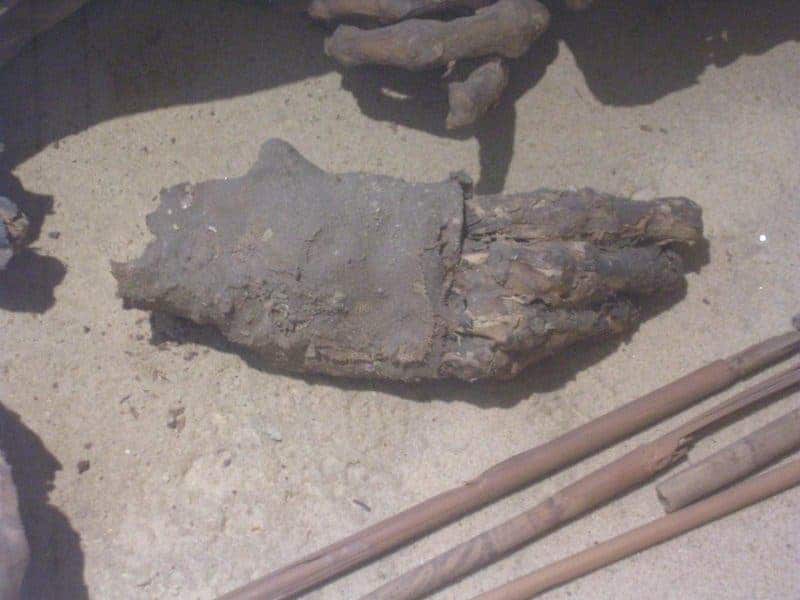
Fragment of the mummy housed at the Egyptian Museum in Turin since 1901. Credit: Dr Stephen Buckley, University of York.
An extensive analysis of a prehistoric mummy that had been gathering dust in an Italian museum showed that sophisticated embalming is far older than we thought. According to the international team of researchers that carried out the analysis, ancient Egyptians practiced embalming since at least 3700-3500 BC and did so over a wide geographical area.
The mummy in question has been housed at the Egyptian Museum in Turin, Italy, since 1901. Researchers chose it because it had never undergone conservation treatments, providing an extremely rare opportunity to sample unadulterated Egyptian embalming.
At first, scientists thought that the mummy had been naturally mummified through the desiccating action of the hot, dry desert sand. A chemical analysis, however, revealed that the mummy had, in fact, gone through an embalming process.
The mummification process took place on a male, aged between 20 and 30 years at the time of his death. Radiocarbon dating suggests that the mummy was embalmed around 3600 BC, during the Naqada phase of Egypt (4400-3000 BC), substantially earlier than the classic Pharaonic period.
The embalmer used plant oil, heated conifer resin, an aromatic plant extract, and a plant gum/sugar mixed together and used to impregnate the funerary textiles in which the body was wrapped. This sophisticated recipe is very similar to those employed by Egyptian embalmers 2,500 years later, when the craft is generally considered to be at its peak.
The new findings suggest that embalming was practiced at a high level 1,500 years earlier than previously accepted, an impressive margin.
The new work builds on previous research from 2014 which identified complex embalming agents in ancient fragments of linen wrappings from tombs unearthed at Mostagedda in Middle Egypt. The Turin mummy came from Upper (southern) Egypt, which shows that the embalming recipe was being used over a wider geographical area at a time when the concept of a pan-Egyptian identity was supposedly still developing.
“Having identified very similar embalming recipes in our previous research on prehistoric burials, this latest study provides both the first evidence for the wider geographical use of these balms and the first ever unequivocal scientific evidence for the use of embalming on an intact, prehistoric Egyptian mummy,” said Dr. Stephen Buckley, an archaeological chemist and mummification expert at the University of York.
“Moreover, this preservative treatment contained antibacterial constituents in the same proportions as those used in later ‘true’ mummification. As such, our findings represent the literal embodiment of the forerunners of classic mummification, which would become one of the central and iconic pillars of ancient Egyptian culture.”
Reference: Stephen Buckley et al. “A prehistoric Egyptian mummy: evidence for an ’embalming recipe’ and the evolution of early formative funerary treatments.” Journal of Archaeological Science, 2018.









